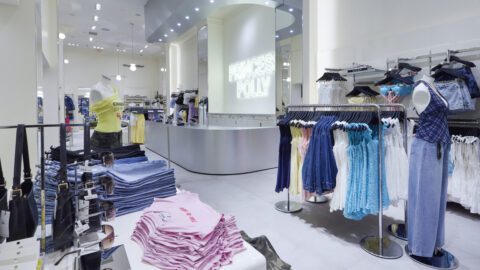By Rob Garf, Associate Partner and Global Retail Industry Strategy Leader, IBM Global Business Services.
With the unpredictable holiday season firmly behind us and the economy showing signs of gradual improvement, retailers are focused on getting customers back in the store and optimizing operations for 2010 and beyond.
Today frugal is the new black. The conspicuous consumption of the ‘80s and ‘90s has been replaced by finite demand. In response, retailers have moved away from a supply-focused “if we produce it, they will come” mentality to engineering operating models that truly sense consumer demand and respond efficiently. In short, Mall of Dreams has been replaced by Smarter Retail.
Advertisement
Here are three key trends that characterize this new Smarter Retail:
1. Consumers Want a Turn at the Wheel
A recent IBM study of more than 30,000 consumers worldwide revealed a startling result — 78% of respondents are interested in collaborating with retailers to co-create new products and services that meet their needs. Today’s consumer is no longer passive. Thanks to the Internet, mobile devices and in-store kiosks, consumers have been empowered by instant access to volumes of information about retailers, their products, and, perhaps most tellingly, other consumers’ opinions of those products. They know what they want and are willing to roll up their sleeves and work with retailers to influence results.
How can retailers ready themselves for these co-creating consumers? The first step is to be able to operationalize all the data flowing in — data that represents what customers really want. Blog posts, customer e-mails, live chat sessions and product reviews constitute invaluable market research, as long as retailers are equipped to process it. Smart retailers will increasingly use analytics tools to mine insights from all this structured and unstructured data and then use those insights to create personalized promotions. The result will be increased sales and loyalty.
2. Blurring Into Private Label
Faced with ongoing economic uncertainty, a growing number of consumers are switching to private label products, and retailers are keeping pace. Store brands were up 10% in annual sales across categories in 2009, according to The Nielsen Company. This trend effectively transforms retailers into manufacturers, requiring the need to master product development processes in both fast-moving and fashion merchandise categories. A similar shift is taking place among manufacturers, who are increasingly going directly to consumers. This began with outlet stores; today many sell directly from their own online sites. In fact, research from Vertical Web Media shows that one of the fastest-growing areas in online retail is direct sales by consumer-brand manufacturers, which grew almost 13% in 2009.
This shifting competitive landscape is marked by a growth in vertically integrated operations. This will create significant impact and challenges for retailers, who now have to transform and extend their supply chain, demand planning, and product development operations across the extended enterprise.
3. Avoiding Technology for Technology’s Sake
According to findings from the annual NRF CIO Study I led three years ago, for the first time in history retailers have more commercially available software in their portfolio (60%) than legacy homegrown applications (40%). That is because they are increasingly leaving software development skills to software companies so they can focus on their core business. As the previous two trends show, retailers already face significant challenges keeping up with today’s informed consumer and shifting competitive models.
In addition to investing in foundational planning and execution systems to leverage data and operationalize customer intelligence, retailers are also experimenting with innovative new technology advances such as social media and mobile commerce. We encourage our clients to look past the wow factor and test these new technologies in the context and presence of the customer using them, in order to increase usability and drive adoption. For example, IBM is currently working with a grocery retailer to pilot a location-based shopping and promotional application for cell phones. But ultimately it’s not the breadth of information or whether it runs on Android that that will make this application a success — it’s the ability for customers to easily access and navigate the information.
The current economy dictates that retailers must stay sharply focus on short-term indicators like same-store sales and gross margins. But the industry innovators are also taking a longer-term view, with plans to leverage technology and business processes to increase customer demand from the smarter shopper, while at the same time optimizing inventory across and increasingly complex network. Smarter retailers will continue to grow and differentiate. Will you be one of them?
Rob Garf is an Associate Partner and Global Retail Industry Strategy Leader for IBM Global Business Services.











